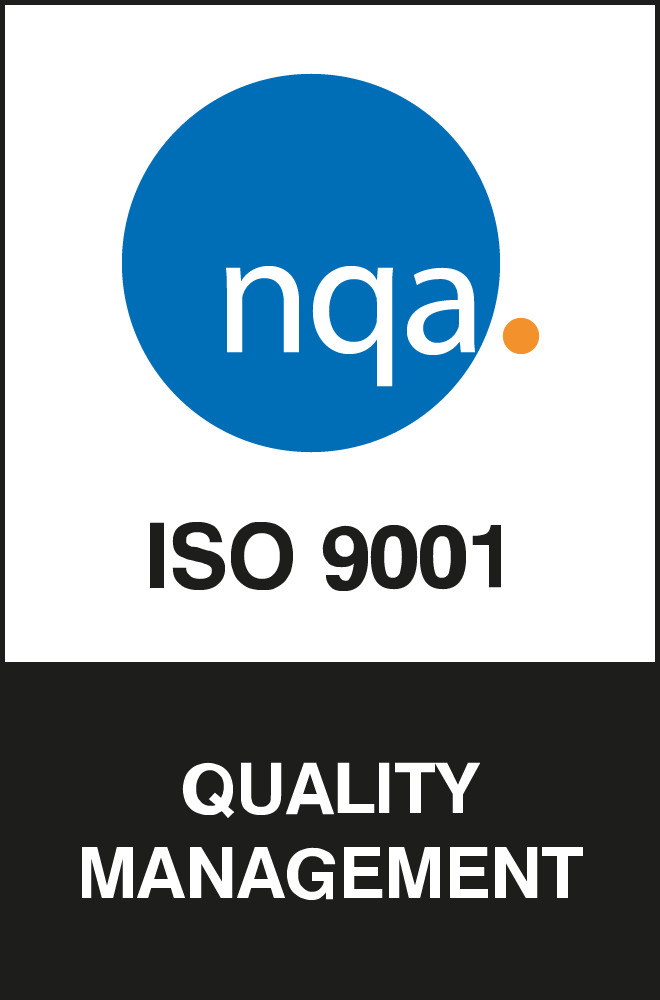How are businesses in the travel, tourism and hospitality industry going to use technology moving forward to enhance the customer experience and ensure traveller safety in 2023?
Enhanced Passenger Experiences
Leading airlines have begun trialling the use of VR to complement their in-flight entertainment offerings. These airlines hope that providing customers with virtual reality games, films and experiences will help them to remain appealing in this highly competitive market.
As well as this, the technology is also being used to support the training and education of cabin crews. This gives them further opportunities to view and experience the inside of an aircraft so they can become more familiar with the layout and aircraft specific health and safety protocols.
Airline passengers can also use AR to ensure their luggage will fit in the designated holding areas before they leave their homes so they don’t have to face the issue when they arrive at the airport for their flight.
Additionally, with AR cabin crew members can access information about a flight passenger’s health conditions, allergies and the destination they’re travelling to just by looking at them – saving them vital time in the event of an emergency.
Seamless Security Measures
Security has always been a high priority at airports across the globe to keep passengers and staff safe as well as to prevent the transport of illegal goods from one place to another.
Today, the technology we see used in airports is highly advanced and is only going to become more complex and intelligent as research and innovation within the aviation field continue.
The U.K Government has reportedly invested almost £2 million in the development of technology that serves the specific purpose of increasing whilst minimising waiting times for passengers boarding and departing (ITpro).
More specifically a few of the eight individual projects commissioned by the government include:
- Electromagnetic cameras that detect different objects inside passenger luggage
- Gas sampling from cargo to monitor the risk of explosives
- AI to scan and analyse passengers as potential threats
Journey Personalisation with Wearables and IoT
Wearables and connected devices are being used by most industries nowadays, but their potential in the travel industry raises some exciting possibilities.
Connected sensors in aeroplane seats could help alert cabin crew of passengers whose temperatures or heart rates are higher than normal and therefore might require adjustments to the in-flight temperature control system, a bottle of water, medical assistance or just some reassurance. This helps ensure a passenger’s flight is as comfortable as possible.
Similarly, wearables can remind passengers when it’s time to stand up and move around the plane in order to reduce the risk of deep vein thrombosis or other conditions that can be brought by long periods of sitting stationary.
Another application is the use of connected sensors that track suitcases and luggage so that passengers can track their journeys and alert airline staff is lost as well as showing passengers where their luggage is located on the baggage claim carousel, saving lots of time.
Biometric Recognition Technology
Whilst fingerprint and facial recognition technology has been used at most airports for some time now, hotels have not yet begun using this tech to improve guest experiences at scale.
Biometric technology could be used to allow guests to access their rooms and other permitted amenities without the use of their room card (which could become lost or stolen) or a need for colour coded plastic wrist bands (which can be somewhat easily removed and swapped between guests).
Biometric recognition technology could also be used to automatically authorise payments for extra goods and services and so that guests can check themselves in and out without the need of concierge assistance, freeing up staff time and reducing waiting times.
Self-Service Tech
With social distancing and other precautionary measures still in place within many areas of the travel industry, self-service tech is only going to rise in popularity as businesses aim to remain productive without sacrificing staff and guest safety.
This tech can also help travel and tourism businesses reduce spend on employee training and wages.
Here are some examples of areas within the travel industry that could benefit from automation or becoming self-service:
- Automated or robotic housekeeping
- Self-service check-in/out
- Automated room service ordering and delivery
Virtual Travel Experiences
To keep would-be travellers interested whilst flight restrictions remain in place, some tourism boards and hotels have begun using VR.
As a clever marketing ploy, companies are using the technology to offer their customers the opportunity to ‘visit’ destinations like Jamaica, the Maldives, Northern Ireland and Germany.
Although it is on a trial basis, it’s a way to entice potential customers into booking a trip when the current restrictions are lifted or at the very least eased enough to allow overseas travel.
This can also help people who are unsure if they’re ready to travel yet to better understand a hotel, airport or destination’s health and safety measures so that they feel more comfortable.
Those of us who are missing that in-flight feeling, in particular, can enjoy flight simulators like Japanese based company First Air’s VR simulator in which passenger ‘journeys’ are complete with a boarding pass and in-flight meals.
Digital Nomads and Aspirational Travel
With many of us no longer having to worry about the length and complexity of our commutes due to extended remote work policies, some people are choosing to relocate to countries with warmer climates. This is just one of the unique traveller trends to have come out of Covid-19.
The pandemic has demonstrated to those of us who were previously desk-bound that, as long as we have a laptop and a WiFi connection, we can work from just about wherever we want.
This has caused some people to reconsider the locations they live in, opting to travel on ‘digital nomad’ visas to countries like Bermuda, Barbados and Dubai.
Companies like Airbnb and other similar startups within the travel industry have already adapted their business models to cater to this type of worker, offering more long-term stays with fast WiFi and in many cases designated home offices to their customers.
According to Airbnb, these 12 cities are emerging as hotspots for digital nomads:
- Bogotá, Columbia
- Istanbul, Turkey
- Bratislava, Slovakia
- Málaga, Spain
- Lima, Peru
- Marbella, Spain
- Nuremberg, Germany
- Venice, Italy
- San Jose, U.S.A
- Antibes, France
- Krakow, Poland
- Miami, U.S.A
We can expect this trend to continue growing as the world reimagines the boundaries of traditional office workplaces.
Big Data Enhanced Tourism Strategies
There are a few ways that big data can be used to improve strategies within the travel and tourism industry and companies will increasingly utilise big data for this reason.
Smarter Pricing Strategies
By analysing huge data sets relating customer behaviour, room occupancy rates, local events, national holidays and more hotels can price their rooms effectively to make the most out of periodic increases in demand.
Effective Strength & Opportunity Analysis
Utilising data from review websites and social media, businesses operating within the travel and tourism industry can easily identify what is working for their business and what clearly is not.
From here, specific strategies can be developed to capitalise on their strengths and assess potential routes for growth. Of course, new strategies that are backed by empirical data are always more successful than those without.
Improved Targeted Marketing
Travel and tourism companies can use big data to implement more strategic marketing strategies to approach their customers using the right channels at the right times.
Big data can help these companies to identify consumer trends, sort customers into groups and understand how best to approach the different types as opposed to the blanket, one-size-fits-all marketing strategies.
Better Market Research
Astute observations about the competitors and the state of the industry as a whole can be acquired with big data, helping travel and tourism companies to remain competitive by spotting gaps in the market or areas other companies are failing to meet customer’s standards in.
Understanding the market is key to the success of any industry, especially in a sector as competitive as this one.
Tourist Robotic Assistance
The entire industry has already begun to or is considering the decision to reduce the human element of many of its services, from implementing chatbots to introducing self-check-in options at hotels. Some of the major players within the industry, however, are taking this a step further and bringing in robot assistants to ease processes and maintain social distancing measures.
Using AI-enhanced natural language processing (NLP) technology, robots can be placed in information centres at hotels or tourist hotspots to respond to voice commands asking for weather updates, restaurant recommendations, transport information and much more.
Other types of robots being used in the industry include self-driving luggage trolleys at airports and robot cleaners in busy locations with high foot traffic.
As research and development in the field of robotics continue, the complexity of robots working within the travel and tourism industry is likely to escalate.
Smart Airport IoT
Smart airports that use IoT can greatly improve the experiences of their customers and minimise costly compensation payouts.
IoT enabled signs placed strategically around airports can be updated in real-time with information informing travellers of parking space availability, shuttle transport schedules and the best navigation routes to take around the airport to avoid congestion and queues.
Moreover, mobile apps with live airport maps can alert travellers when they are nearby a shop, bathroom or restaurant if that’s what they are searching for. Smart airport navigation eases the customer’s journey and reduces friction between frustrated customers who are struggling to find their way around and staff members.
Additionally, airlines can use IoT technology to reduce flight delays by implementing connected sensors to each runway which provide up-to-date information about the specific conditions regarding takeoff and landing.
With this, airlines can monitor weather conditions on a case by case basis rather than using a blanket approach which can improve the accuracy of decision making regarding cancellations and delays.
For example, in icy conditions or in the event of flash flooding, conditions may vary from strip to strip, meaning not all flights have to be grounded.
This benefits consumers as they experience less inconvenience due to delays and also benefits airlines as they can improve the reliability of the service they offer and don’t have to pay out as much compensation for delays or cancellations.
What kind of tech would you like to see used in the travel industry next?
If you’ve got an idea for a groundbreaking piece of technology that would really give this sector a boost, get in touch with us so we can bring your project to life.
Coderus is a well-experienced, innovative software and app development company that provides high-end solutions for clients operating in a range of industries.























